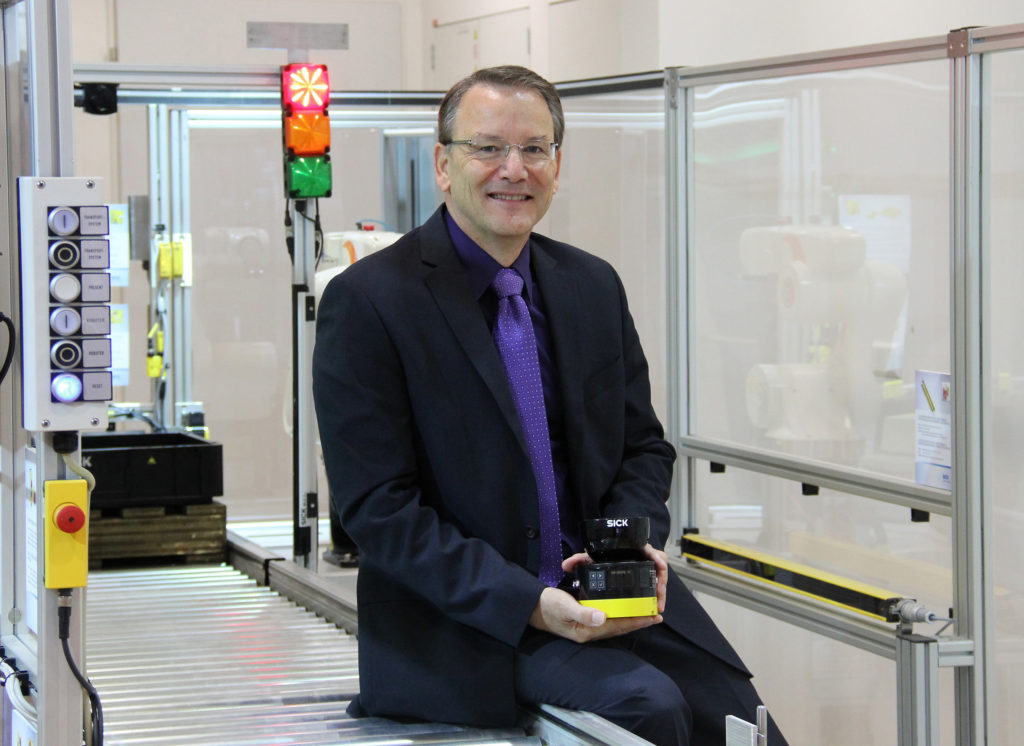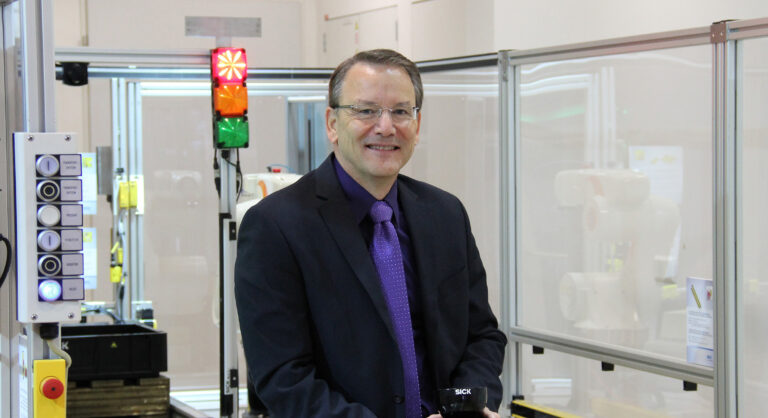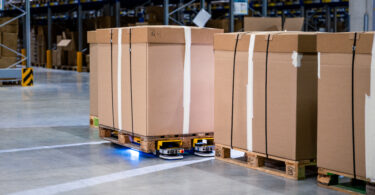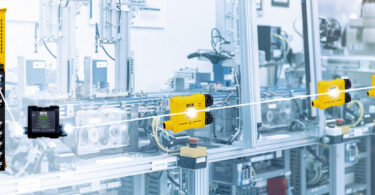An Interview with SICK Safety Expert – Berthold Ketterer on Safety and Industry 4.0

Safety precautions are essential in production environments. What used to be an unpopular necessity is now becoming a boost in productivity. But how can economic value safety measures help improve productivity, too? Berthold Ketterer, Senior Vice President for Industrial Safety at SICK AG, talks about new technologies, Industry 4.0, and productive safety.
As a sensor manufacturer, SICK is at the center of the fourth industrial revolution: Networked product and logistics processes need data – and it is delivered by sensors. So, to start, is there a need to acquire information for intelligent and largely autonomous factories?
Yes, there is. Sensors are the starting point for Industry 4.0. They are where data is created. We now have the chance to also use sensor technologies as a data source and to support our customers in promoting digitalization in industrial environments.
Can sensors assume certain tasks from the central control and provide data and information at the same time?
Up until now, data has usually been sent to a PLC that creates automation logic from it – namely for controlling and regulating machines. That’s where the use of the data ends, with no information being provided about the manufacturing process or the value adding on the production line. We can help with this, for example with our PC-based FieldEcho software, which makes the data available to the cloud via the control for IO-Link sensors. But very often these days, the system is expanded with a second connection separate from the actual control system by coupling sensors and actuators to an edge device, such as a sensor integration machine. This opens up completely new possibilities.
What does this mean for safety? The sensors also have other tasks here, right?
In the field of safety, we also use the possibilities of new technology and promote data fusion and analysis to expand the definition and future possibilities of Safety. This may surprise you, but classical safety is currently getting assistance from us in the form of productivity.
You say safety is taking a back seat while productivity takes center stage, so safety serves productivity. Can you explain that in more detail?
That is a pretty provocative statement, I know! Safety is becoming increasingly dynamic and serving different safety levels. We are turning safety from an often unpopular necessity into real economic added value. In the future, safety applications will make the factories and systems of our customers more efficient and productive. This is a completely new mindset for safety solutions.
At first, this all sounds like a reevaluation of the sometimes unpopular safety requirements (due to the costs), but is it actually more of a win-win situation between Industry 4.0 and safety concerns?
I would say the customer wins all across the board. Imagine a typical production line. We measure the throughput times with a timer. We now install our safety solutions. Then we measure again. The results are impressive. In a specific case of one customer, an increase in productivity of around 30% was measured.
Which solutions does SICK use to help make systems more efficient, quicker, and safer all at the same time?
The keyword is presence sensing device initiating (PSDI). Take the use of a pneumatic and hydraulic press. With a conventional safety solution, the worker inserts the piece part, takes his hands out of the hazardous area and flips two switches on the right and left side of the machine at the same time. Only then does the pressing process start. With PSDI, the presence of hands acts as an on/off switch using the system intelligence or algorithms. This means that, as soon as the hands leave the secured field, the system makes a machine cycle.
With the use of a pneumatic and hydraulic press, the employee must really believe that he can work with both hands without putting himself in danger. How does that work in practice?
That really is something you have to get used to. We are repeatedly finding that, when a new operating principle is being introduced, workers often proceed with reluctance. Even so, we already see a 10% to 15% increase in productivity. Once in a steady state, productivity can be increased up to 30%. By then, employees have gained trust and new habits become routine.
The umbrella term Industry 4.0 is important for many different applications. Which areas does SICK focus on? Where do you make the most investment? What level of growth do you now expect?
Our classic safety business is growing. If you look at innovative fields, such as autonomous driving in industrial environments, robotics, and outdoor applications, we expect above-average growth. Anyone who wants to play must be ready to deliver. And that also means invest.
In your Industry 4.0 factory in Freiburg, you implement practically everything you provide for your customers yourself?
Our factory has a modular structure. The individual fully- and semi-automated production modules are connected to one another by small automated carts (AGCs). We have created the ideal conditions to grow with and in Industry 4.0. We are practically customers on our own premises and gather valuable knowledge every day. The ongoing optimization of our products, solutions, and services is also important here. Because we only install our own sensors and sensor systems in our plants. They have to be able to demonstrate what they are capable of here under real conditions. This provides us with important findings which we can use to generate additional customer benefits from the topic of safe productivity, among others.
Want more information on how safety systems from SICK can add economic value to your facility?





